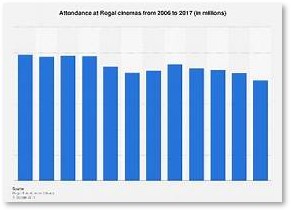 We like to go to the movies—in the theater. It lets us get out of the house so we can see a movie on the big screen with good sound. I also enjoy laughing or crying along with everyone else in the house, depending on the film.
We like to go to the movies—in the theater. It lets us get out of the house so we can see a movie on the big screen with good sound. I also enjoy laughing or crying along with everyone else in the house, depending on the film.
Movie theater attendance in general has trended downward for the last 24 years and attendance at Regal Cinemas, our local multiplex, has dropped steadily since 2013. Their overall attendance has not reclaimed its 2009 high point.
UK-based Cineworld acquired Regal Cinemas last year and Regal’s senior management team lost their jobs. Cineworld’s COO, Matt Eyre crossed the pond to oversee U.S. operations. We ran into one of Mr. Eyre’s management innovations last weekend and we don’t like it at all. Judging from the grumbling in the theater lobby, neither did anyone else.
How Regal Cinema Used to Work
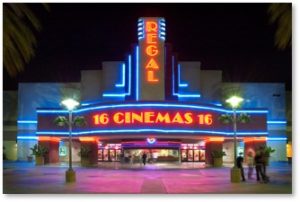 Going to the theater used to be pretty simple. You walked in and bought tickets at the ticket booth. Sometimes, if it wasn’t busy, we would chat for a while with one of the ticket sellers, who also enjoys science fiction movies, about what we had seen and liked, or not. Then we would stop by the concession stand for some popcorn or a bottle of water and stroll into the theater. Sometimes we arrived early and got a slice of pizza at the food court in the attached mall before going back to the theater.
Going to the theater used to be pretty simple. You walked in and bought tickets at the ticket booth. Sometimes, if it wasn’t busy, we would chat for a while with one of the ticket sellers, who also enjoys science fiction movies, about what we had seen and liked, or not. Then we would stop by the concession stand for some popcorn or a bottle of water and stroll into the theater. Sometimes we arrived early and got a slice of pizza at the food court in the attached mall before going back to the theater.
It was pleasant and civilized. Only when a blockbuster was released did we encounter lines at the ticket counter. If the lines at the concession stand had grown too long, we just went straight into catch the movie.
How Regal Cinema Works Now
Matt Eyre has over 30 years of experience in the movie industry, but you might think he had come to Cineworld from the airline business. His big, money-making innovation is to make the experience of visiting the theater as unpleasant and stressful as possible. Here’s how.
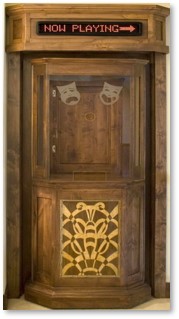 The ticket booths are empty. You now purchase your tickets at the concession stand, along with your popcorn. The strategy, I believe, is to sell more food by forcing people to go to the concession counter. It worked with us—but only once. Fool me once, shame on you. Try it twice and I change my strategy.
The ticket booths are empty. You now purchase your tickets at the concession stand, along with your popcorn. The strategy, I believe, is to sell more food by forcing people to go to the concession counter. It worked with us—but only once. Fool me once, shame on you. Try it twice and I change my strategy.
While this all-in-one operation may sound efficient, it turns out to be anything but. Picture the security line at an airport at rush hour. Yeah, that.
Anyone who has ever stood behind a family with four children who can’t decide what snack they want or who keep changing their minds know the frustration of waiting while the movie start-time draws closer. If all you’re waiting on is your popcorn, you can just leave and go into the theater. But if you have to get your ticket from the harried teenager behind the candy counter, you have no choice but to wait.
The Long, Slow Line
And that’s what happened. We waited so long that the time for a slice of pizza in the food court ran out. We gave in and got a couple of dogs along with our popcorn. For what we paid, we could have eaten a plated dinner in the chain restaurant up the street. It took a loooooong time and when we reached the counter, we were as frustrated as everyone else. The people behind us probably groaned when they heard the words “hot dog.”
The young woman waiting on us was so stressed out by the crowd and the complexity, she looked like she wanted to cry—or quit when her shift was over. I did not help. She was flustered, got our order wrong, and I snapped at her. Not my best moment.
Don’t get me wrong: the line wasn’t long because employees were dawdling. On the contrary, they were working hard. The manager and assistant manager were literally running back and forth to keep things moving. Everyone was doing their best to implement a really bad decision.
Now, imagine that you are late and don’t have much time before your movie starts. You rush into the theater and find…the looooong, slow line. And you know that you will never make it up to the counter before the trailers have all finished and the movie has already begun. Are we having fun, yet?
The Online Solution
Now, if you’re unfamiliar with how theaters make their money, think food. At the beginning of a movie’s run, most of the money from ticket sales goes back to the studio. That’s because the studio leases the movie to local theaters for a set period of time. In the first two weeks, the theater gets to keep only about 20% to 25% of the money. For a blockbuster, they may not hold on to any at all, with 100% going back to the studio.
This percentage improves over time. In weeks two and three, the theater’s take can increase to 45% to 50 and after the fourth week theaters can usually keep 80%. The only trouble is, of course, that not many movies hang around that long. Or, if they do, the audience is pretty small.
That’s why a movie that stays in the theater for many weeks—or “has legs” in the vernacular—can improve a theater’s profits significantly.
Follow the Money
For movie theaters, therefore, the number of tickets sold is less important that buckets of popcorn sold, because that’s where the profits lie. You’re there to see the movie. They want to sell you food. And that explains why theaters have added items like flatbread pizza and sandwiches to their offerings. The more you eat, the more money they make.
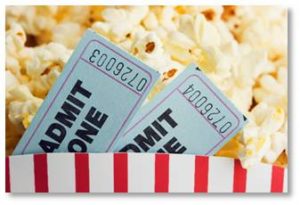 Thus, Mr. Eyre’s decision to force people to the concession counter makes logical sense. It just doesn’t work in practice.
Thus, Mr. Eyre’s decision to force people to the concession counter makes logical sense. It just doesn’t work in practice.
During our long wait, I watched the employees working the concession counter and, to a person, they appeared harried, stressed and unhappy. Had I stood up on a chair and asked how many of the patrons in the lobby liked the new policy, I would have received a round of boos. So, no one likes the new Cineworld policy except, possibly, Matt Eyre.
Changing Strategy
Now, as a customer, and a holder of a Regal Crown Club card, I have options.
- Stay home. It’s more convenient and much cheaper, just not as much fun. Given the poor quality of this summer’s movies, however, it’s the one we have chosen most often.
- Go to a different theater. Right now, this option appeals. We are fortunate to have several independent theaters in the area and I will pay their schedules more attention than I have in the past.
- Buy your ticket online. Then you can just walk in, wave your phone at the one remaining employee who is not selling popcorn, and stroll directly into the theater. I like it.
- Don’t buy popcorn. Although I enjoy popcorn, I will likely avoid it in the future. This will be good for both my waistline and our bottom line. Less money spent, fewer calories ingested. And I stay out of the long, slow line.
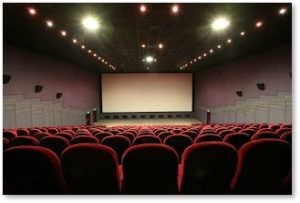 Notice that none of these options will increase Cineworld’s revenue from its Regal Cinema operations. Because, unlike airline customers, movie theater patrons don’t have to do what the company wants us to do. We are there to have a good time. Make the experience unpleasant and we will stay away.
Notice that none of these options will increase Cineworld’s revenue from its Regal Cinema operations. Because, unlike airline customers, movie theater patrons don’t have to do what the company wants us to do. We are there to have a good time. Make the experience unpleasant and we will stay away.
At a time when theater attendance overall, and for Regal Cinemas in particular, continues to decline, Cineworld’s management has decided the best way to turn things around is to alienate its customers. “People aren’t coming to the theater? Let’s make it unpleasant, difficult, and stressful. That will fix the problem!”
Brilliant.
